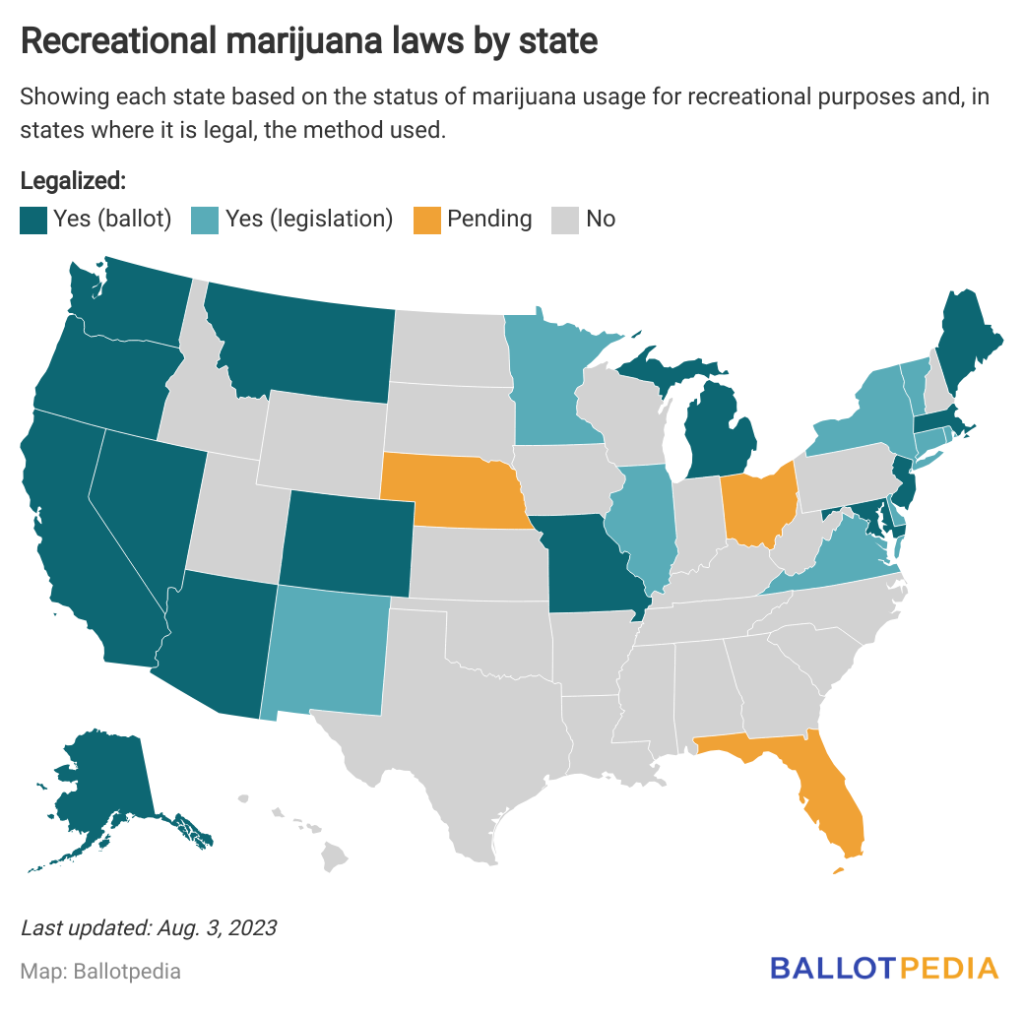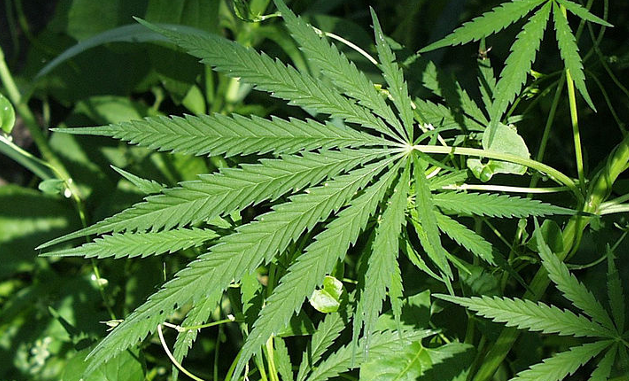The Coalition to Regulate Marijuana Like Alcohol, the campaign supporting a marijuana legalization initiative in Ohio, submitted an additional round of 6,545 signatures to the secretary of state on Aug. 3, 2023. If enough valid signatures are found, this would qualify the initiative for the Nov. 7, 2023, ballot in Ohio. The initiative needs at least 679 valid signatures to qualify for the ballot. That means 10.4% of the new signatures need to be found valid.
Last month, the coalition submitted 222,198 signatures to the secretary of state’s office on July 5, 2023. The initiative needed 124,046 valid signatures to qualify for the ballot, but 123,367 signatures were found to be valid by the secretary of state on July 25—meaning the campaign was short by 679 signatures. In Ohio, there is a 10-day period, known as a cure period, to submit an additional round of signatures if an initiative falls short of valid signatures.
The newest submitted signatures will need to be verified by the county board of elections over the next eight days.
In Ohio, in order for an indirect initiated state statute to be placed on the ballot, two rounds of 124,046 valid signatures are needed. This means that a measure needs a total of 249,092 valid signatures, which also includes the initial round of 1,000 signatures needed to file the proposal. The signature requirements change after every gubernatorial election and are based on a percentage of the number of votes cast for governor in that election. For an initiated state statute, like the marijuana initiative, the number of signatures submitted must equal 6% of the votes cast for governor in the previous election; for an initiated constitutional amendment, like the amendment regarding abortion that voters will decide in Nov. 2023, the number of signatures submitted must equal 10% of votes cast for governor.
Tom Haren, a spokesperson for the Coalition to Regulate Marijuana Like Alcohol, said, “This submission validates what we’ve said all along: regulating marijuana is popular in Ohio. We’re looking forward to giving Ohio voters a chance to make their voices heard at the ballot this fall.”
Currently, 23 states and Washington, D.C., have legalized the possession and personal use of marijuana for recreational purposes (37 states and D.C. have legalized marijuana for medical purposes). In 12 states and D.C., the ballot initiative process was used to legalize marijuana. In two states—Maryland and New Jersey—the legislature referred a measure to the ballot for voter approval.
In nine states, bills to legalize marijuana were enacted into law. Most recently, Delaware and Minnesota legalized the recreational use of marijuana in 2023. The most recent measure on the ballot to legalize recreational marijuana was in Oklahoma on March 7, 2023, and it was defeated with 38% voting ‘yes’ and 61% voting ‘no’.
Of the 30 marijuana legalization measures that have been on the ballot, 15 (50%) were approved and 15 (50%) were defeated. The first state to place a recreational marijuana question on the ballot was California in 1972. It was rejected by voters. The first states to legalize recreational marijuana were Colorado and Washington in 2012, and they did so through the ballot initiative process.

The Ohio initiative, if approved by voters, would legalize the use, possession, cultivation, and sale of recreational marijuana for adults 21 years of age or older. Under the measure, adults would be able to possess up to 2.5 ounces of cannabis and up to 15 grams of marijuana concentrates and be able to grow six marijuana plants at home or up to 12 plants per household. A 10% tax on marijuana sales would also be established, with the revenue going to a cannabis social equity and jobs program.
Based on campaign finance information through June 30, 2023, the Coalition to Regulate Marijuana Like Alcohol reported $4.62 million in cash and in-kind contributions and $4.68 million in expenditures. The largest donor was the Marijuana Policy Project, which provided $2.52 million.
Medical marijuana was legalized in Ohio in 2016. Recreational marijuana is illegal in Ohio. Ohio voters previously defeated Issue 3 on the ballot in 2015, which would have legalized the limited sale and use of marijuana and created 10 facilities with exclusive commercial rights to grow marijuana.
If the initiative has enough valid signatures, it will go on the ballot for the election on Nov. 7, 2023.
Ohio voters will also be deciding on an amendment to establish a state constitutional right to "make and carry out one’s own reproductive decisions," including decisions about abortion, in Nov. On Aug. 8, 2023, voters will decide on Issue 1—a constitutional amendment that would require a 60% vote to approve constitutional amendments, increase the signature distribution requirement for citizen-initiated amendments, and eliminate the signature cure period for citizen-initiated amendments.
Additional reading:


